Pav Buns
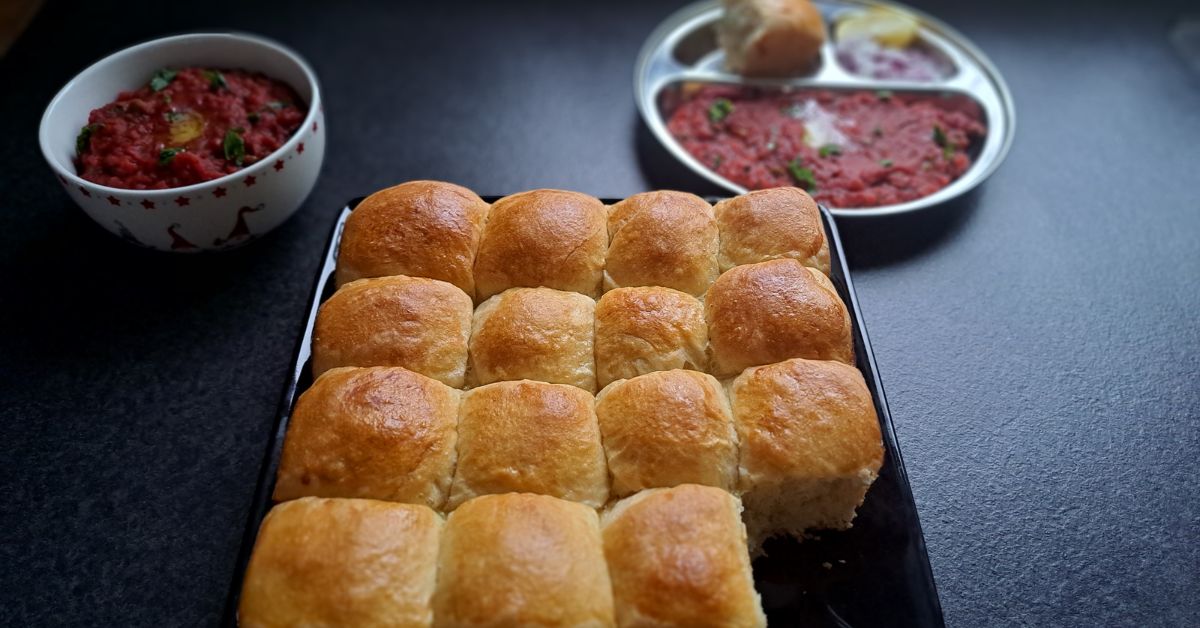
Pav Buns are a type of soft, fluffy bread that gained popularity in India, particularly in the state of Maharashtra. These light and pillowy buns are a crucial component of Indian street food, Pav Bhaji.
Additionally, pav buns are commonly used to make vada pav, another beloved street food delicacy. In this dish, a deep-fried potato patty known as vada is sandwiched between halves of a pav bun and garnished with chutneys and fried green chillies.
A pav bun has a delicate texture, a slightly sweet taste, and a distinctive square shape. It is made using a combination of flour, yeast, milk, sugar, and butter, resulting in a bread that is soft on the inside with a golden-brown crust. The unique square shape of pav buns is convenient for serving with a variety of fillings and gravies.
Experience the perfect harmony of rich cream cheese and savoury garlic in our Korean Cream Cheese Garlic Buns—soft, fluffy, and absolutely unforgettable!
Yeast
I added the yeast directly into the flour as it is an instant yeast. If you’re using active dry yeast, bloom it in warm milk before adding it to the dough. In a small bowl, combine the warm milk with the active dry yeast. You can also add a tablespoon of sugar to help feed the yeast, but it’s optional. Stir gently until the yeast is dissolved. Allow the yeast mixture to sit for about 5 to 10 minutes. During this time, the yeast should start to foam or bubble on the surface. This indicates that the yeast is alive and active. Once the yeast is bloomed and active, you can add it to your dough mixture. This helps activate the yeast and ensures that it’s alive and ready to ferment the dough, which is essential for proper rising.
By blooming the yeast beforehand, you ensure that it’s viable and ready to do its job of leavening the dough, resulting in soft, fluffy baked goods.
Add a touch of Swedish tradition to your baking with Lussekatter or Swedish saffron buns — soft, golden saffron buns perfect for the festive season!
How to serve Pav buns?
Beyond street food, they also make a delightful addition to meals at home. You can slice them to make sandwiches or sliders, offering a convenient and delicious option for lunch or snacks.
One of the most popular ways to enjoy them is with pav bhaji, a mixed vegetable curry served with buttered and toasted pav buns. The soft texture of the buns contrasts beautifully with the spicy bhaji. Alongside the pav bhaji, serve some additional accompaniments. These can include lemon wedges, finely chopped onions, and green chillies for those who prefer extra heat.
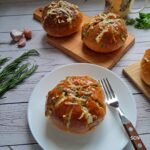
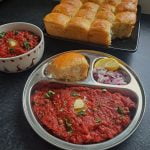
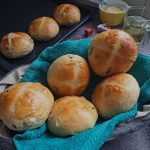
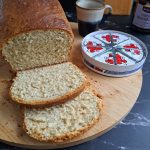
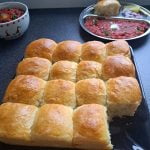
Pav Buns
Ingredients
1 cup = 250ml
- 3 ½ cups or 425 grams of All-purpose flour
- ¼ cup or 50 grams of sugar
- 2 ½ tsp instant yeast
- 1 tsp salt
- 1 room-temperature egg
- 1 cup or 220 ml milk
- ½ cup or 100 grams of softened butter
Egg wash
- 1 Egg + 1 tbsp milk
Instructions
- Combine the flour, sugar, yeast, egg and salt in a large mixing bowl or a stand-mixer bowl. (Read above the recipe card to know more about the yeast)
- Add warm milk and mix to form a soft dough.
- Knead the dough on a stand mixer for about 8-10 minutes or on a floured surface for about 20-25 minutes until it becomes smooth and elastic.
- Add softened butter in batches to the dough and continue kneading until the butter is fully incorporated.
- The dough should be soft, slightly sticky, and elastic.
- Place the dough in a greased bowl, cover it with a damp cloth, and let it rise in a warm place for 1-2 hours or until it doubles in size.
- Punch down the risen dough and divide it into equal portions.
- Shape each portion into a smooth ball and place them on a greased, square baking pan, leaving some space between each bun.
- Cover the tray with a damp cloth and let the buns rise again for about 30-45 minutes until they puff up.
- Brush the top of the buns with the egg-wash mixture. Whisk together one egg with a tablespoon of milk until well combined. Then, using a pastry brush, gently apply the egg wash mixture evenly over the tops of the buns just before baking. This will give them a shiny, golden-brown finish as they bake.
- Preheat the oven to 180°C.
- Bake the buns for 18-20 minutes or until they turn golden brown on top.
- Once baked, transfer the pav buns to a wire rack to cool.
- Now, your homemade pav buns are ready to be enjoyed! Serve them with your favourite curry, make pav bhaji, or use them for delicious sandwiches like vada pav.
Notes
- If you’re using salted butter, you can skip adding extra salt.
- I used a 23 cm square pan for baking pav buns. You may need to adjust the number of buns you place in the pan depending on the size of the buns, pan size and how close you want them to be while baking. Ensure that you grease the pan well before placing the buns in it to prevent them from sticking.
- Once they’re golden brown and sound hollow when tapped on the bottom, they’re ready to be removed from the oven and enjoyed!
More recipes to try

6 thoughts on “Pav Buns”